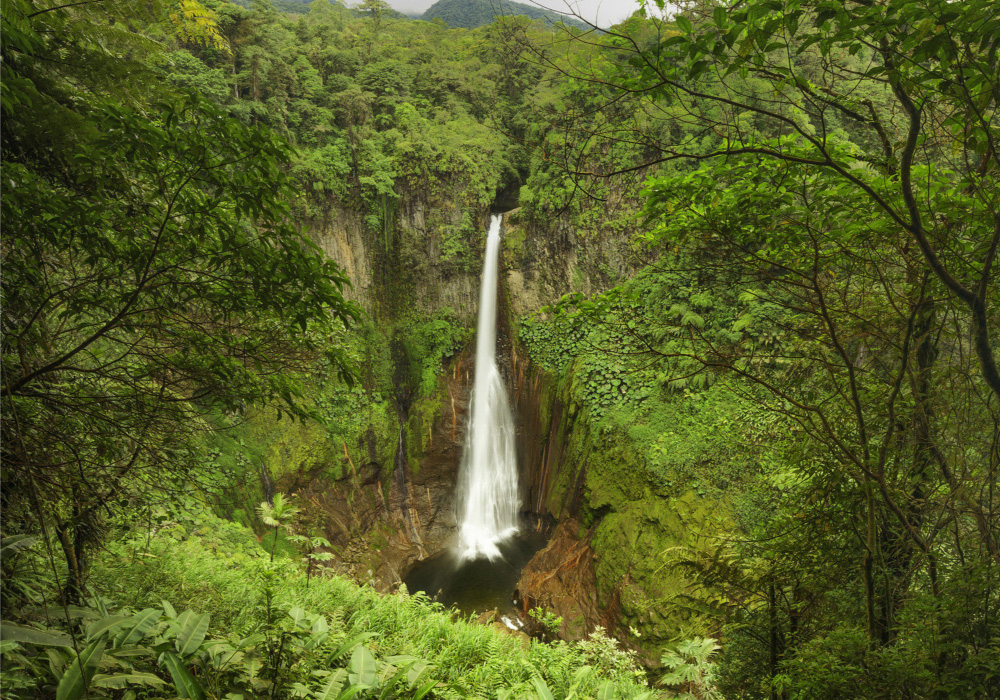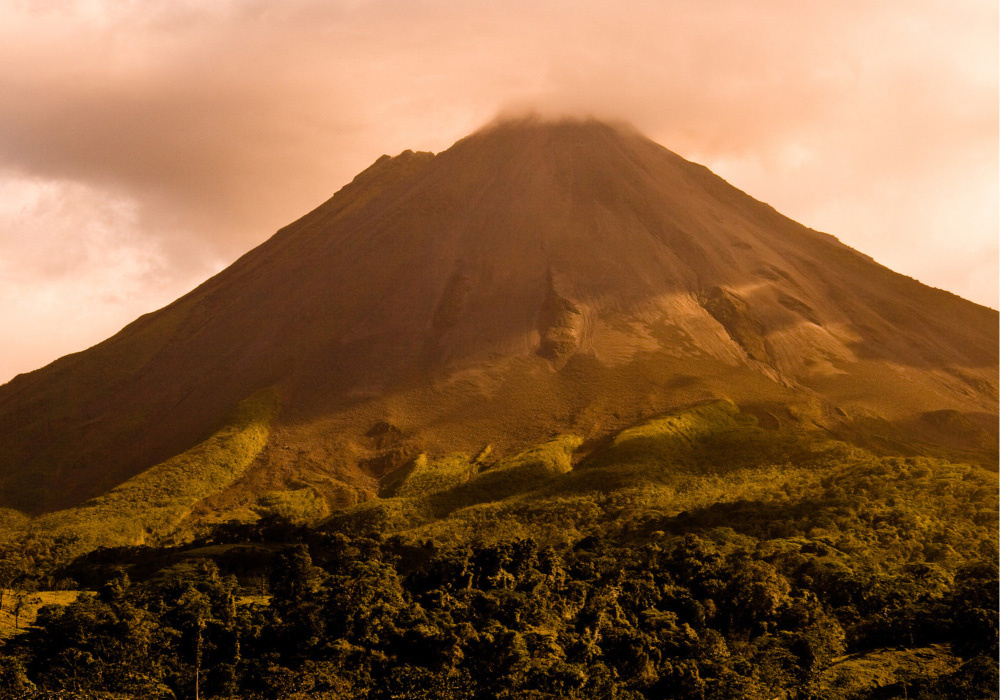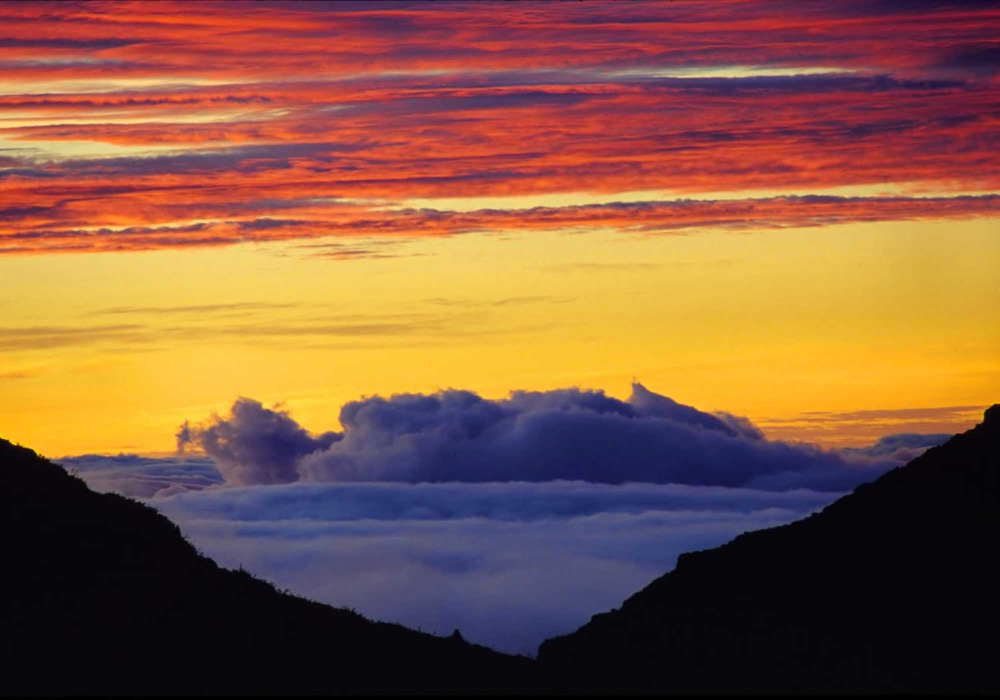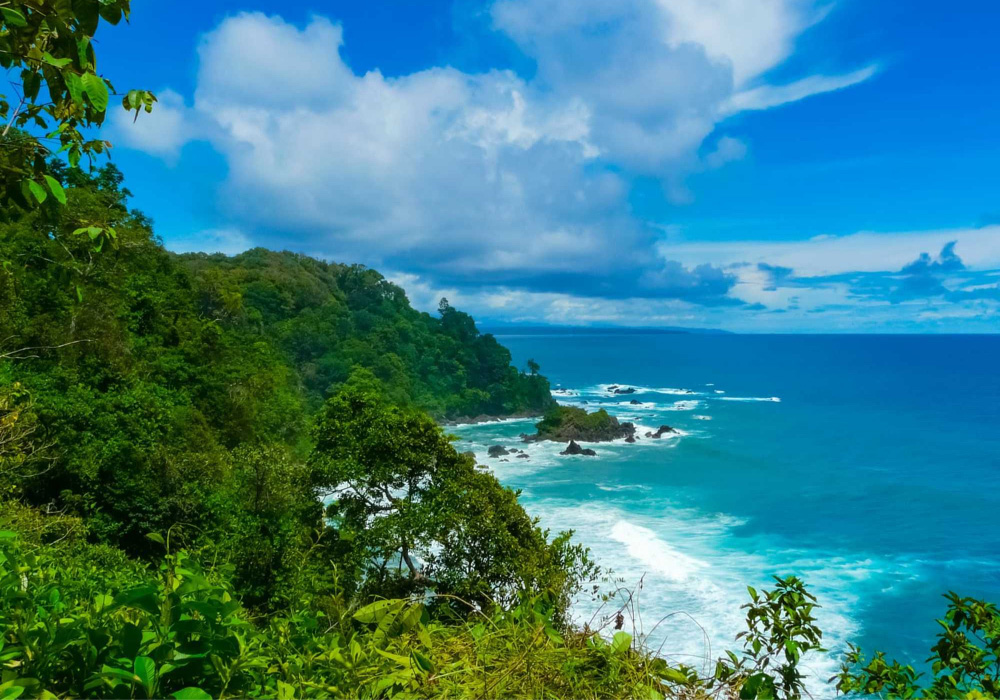Few places on Earth offer wilderness as pristine as Costa Rica's hidden trails, where waterfalls carve secret pools in the jungle, cloud forests breathe with life unseen, and volcanic peaks stand guard over untamed landscapes. Here, solitude isn't just found; it's gifted by nature itself.
Costa Rica’s lush rainforests, misty cloud forests, and rugged volcanic landscapes hold secrets far beyond the well-trodden tourist trails. For those willing to venture deeper, hidden waterfalls, secluded beaches, and remote peaks offer an unfiltered connection with nature, where the only sounds are the calls of toucans and the rush of untamed rivers.
This is trekking at its purest: no crowds, no shortcuts, just raw, untouched beauty. From the towering heights of Cerro Chirripó to the wildlife-rich depths of Corcovado, these trails promise adventure, solitude, and memories that redefine what it means to explore.

Uncovering Costa Rica's hidden natural treasures
Costa Rica’s reputation as a paradise of biodiversity and eco-tourism is well-earned. Its volcanoes, rainforests, and beaches lure travellers from around the world. But beyond the popular destinations lies a quieter, wilder version of the country—accessible only to those who seek it out on foot. Trekking these lesser-known paths reveals natural gems where silence, solitude, and surprise define the journey.
These landscapes feel untouched because, in many ways, they are. Tucked away from well-trodden tourist routes, they offer immersive encounters with the land and its many ecosystems. From hidden cascades to misty forest reserves and quiet coves, these places are portals into Costa Rica’s authentic wilderness.

Here are four types of natural gems awaiting discovery:
-
Secret waterfalls: Nestled deep within the jungle, these cascades offer tranquil swimming spots surrounded by ferns, orchids, and the calls of tropical birds. Reaching them requires wading through streams and climbing moss-slicked rocks, but the reward is a private paradise. At spots like Nauyaca or the hidden falls of Bajos del Toro, you can swim beneath curtains of water with only butterflies for company.
-
Mystical cloud forests: With their ever-present mist and rare wildlife, places like Monteverde feel like stepping into another world. The trails here are quieter than those in more popular parks, offering a meditative escape into the embrace of nature.
-
Untouched beaches: Located on remote stretches of the Pacific coast, these beaches offer moments of solitude, framed by crystal-clear water and natural beauty. These hidden stretches of sand, such as Playa Ventanas or Playa San Josecito, are framed by jungle-clad cliffs and tide pools teeming with marine life. Pack a hammock and let the rhythm of the waves be your soundtrack.
-
Remote volcano trails: While Arenal and Poás attract crowds, trails like those around Tenorio Volcano or Rincón de la Vieja offer rugged solitude. Hike through otherworldly landscapes of steaming fumaroles and turquoise rivers, with panoramic views that stretch to the horizon.
Top hidden trekking trails in Costa Rica
Let's explore some of the top hidden trekking trails in Costa Rica that promise unforgettable experiences.
Cerro Chirripó
Cerro Chirripó stands as Costa Rica's tallest mountain. The trek to its peak is a challenging yet rewarding journey. Hikers are treated to a diverse array of ecosystems, ranging from cloud forests to páramo landscapes.

Here are a few highlights of the Cerro Chirripó trek:
- Distance: Approximately 20 kilometres to the summit.
- Duration: Typically takes 2-3 days.
- Climate: Cold at higher altitudes, with temperatures dropping below freezing.
The trail starts at the village of San Gerardo de Rivas. Trekkers will ascend through lush forests filled with exotic birds and unique plant species. A rest at the Crestones Base Lodge is a must before making the final ascent to the summit.
The panoramic views from the top are awe-inspiring. On clear days, both the Pacific Ocean and the Caribbean Sea are visible. Cerro Chirripó offers a spiritual retreat from the hustle and bustle of daily life.
Corcovado National Park
Corcovado National Park is often referred to as one of the most biologically diverse places on Earth. The trails here provide a deep dive into Costa Rica's rich biodiversity. Trekking in Corcovado is an adventure filled with surprises.

Key features of the Corcovado National Park trek:
- Flora and fauna: Home to jaguars, tapirs, and scarlet macaws.
- Trail lengths: Vary from short walks to multi-day treks.
- Best time to visit: Dry season from December to April.
Visitors can choose from several trails, each offering unique sights and sounds. The Sirena Station is a popular starting point, offering access to trails that lead through dense rainforest. Night treks reveal a different side of the jungle, with nocturnal creatures coming to life.
For those who love water, the park's coastal trails are a treat. Trekking along the beach offers views of pristine sands and the chance to spot dolphins and sea turtles. Corcovado is a trekker's dream, combining lush jungles with stunning beaches.
Cascades of La Fortuna
The Cascades of La Fortuna offer a trek that combines natural beauty with refreshing waterfalls. Located near the Arenal Volcano, this area is a haven for outdoor enthusiasts.
Details about the Cascades of La Fortuna:
|
Feature |
Description |
|---|---|
|
Waterfalls |
Numerous cascades, with the main waterfall plunging 70 meters. |
|
Trail type |
Short but steep, with stairs leading to the base. |
|
Nearby attractions |
Arenal Volcano, hot springs. |
The trek begins in lush rainforest and descends to the base of the waterfall. The sound of rushing water grows louder as trekkers approach. A swim in the cool pool at the base is the perfect way to refresh after the hike.
Visitors can also explore the surrounding trails, which offer views of the Arenal Volcano. The area is rich in wildlife, with opportunities to spot toucans and howler monkeys. The Cascades of La Fortuna provide a perfect blend of adventure and relaxation.
Planning your trekking adventure in Costa Rica
To get the most out of your journey through Costa Rica’s wild spaces, sound planning is key. The country’s two main seasons each offer different rewards, and knowing when to go helps shape your experience.

Best time to go
- December to April (Dry Season): Ideal for accessibility and sunshine, but expect increased tourist activity.
- May to November (Green Season): Rain transforms the landscape into a lush oasis, with fewer crowds and vibrant wildlife activity.
Choose based on your preference: solitude and green vistas in the rainy season, or clearer trails and guaranteed sunshine during the dry months.
Navigating the terrain
Costa Rica’s hidden trekking routes can take you deep into remote rainforests, along narrow volcanic ridges, or through valleys that see few visitors. While the rewards of these wild paths are great, the challenges they present require careful preparation. Navigating these terrains is not as simple as following well-marked trails; the dense vegetation, changing weather conditions, and limited signage in remote areas make it essential to come equipped with proper tools and knowledge.
Maps and navigation tools
The importance of reliable navigation tools cannot be overstated when trekking in Costa Rica’s less-travelled areas. Topographic maps are invaluable for understanding elevation shifts, river crossings, and terrain types—especially in mountainous or jungle regions where a misstep can lead you off course. Apps like AllTrails and Gaia GPS have become indispensable for modern trekkers, offering real-time route tracking, downloadable offline maps, and community-generated trail insights. These tools help you stay oriented and informed, even without cellular service.
In addition to digital tools, traditional navigation skills remain important. Mark the locations of key water sources, notable rock formations, forest clearings, or canopy breaks. These landmarks serve as visual anchors to help retrace your steps if needed. For longer treks, particularly multi-day ones, route planning should also include identifying potential shelter spots or base camps.
The value of guided treks
While solo or self-guided adventures may appeal to seasoned hikers, opting for a guided trek can greatly enhance the experience and ensure safety, especially if you're unfamiliar with the region. Local guides offer deep expertise in navigating the terrain, from knowing which paths remain passable during the rainy season to identifying areas with unstable ground or recent wildlife activity. Their understanding of Costa Rica’s ecosystems also enriches the journey, turning an ordinary hike into a learning experience.
Beyond safety and navigation, guided tours often provide invaluable cultural context. Guides share local legends, explain indigenous uses for native plants, and recount the history embedded in the landscapes. This storytelling adds layers of meaning to what you see and hear along the trail, creating a fuller, more immersive trekking experience.
Whether you choose to navigate independently or join a guided expedition, the key to a successful trek in Costa Rica lies in being prepared, aware, and open to the unexpected turns that nature may present. With the right approach, navigating these terrains becomes part of the adventure—an opportunity to sharpen your skills, connect with the land, and uncover stories hidden in every bend of the path.
Final thoughts
Costa Rica’s hidden trails invite you into a world of raw beauty, cultural richness, and unforgettable encounters with nature. From cloud forests and waterfalls to volcanic peaks and coastal hideaways, each trek offers a unique glimpse into the country's soul. The rewards aren’t just the views, but the silence, the serenity, and the sense of wonder that unfolds step by step.
Whether you choose to summit Cerro Chirripó, wander through Corcovado’s untamed rainforest, or soak in the cascades of La Fortuna, one thing is certain: Costa Rica will stay with you long after you’ve left its trails behind. The people you meet, the stories you hear, and the nature you immerse yourself in all become part of a larger journey—one that connects you with a place where wildness and warmth coexist in harmony.



Comments powered by CComment